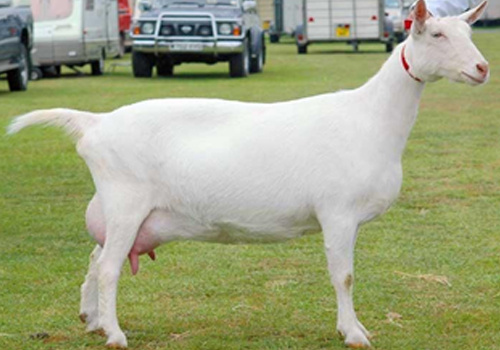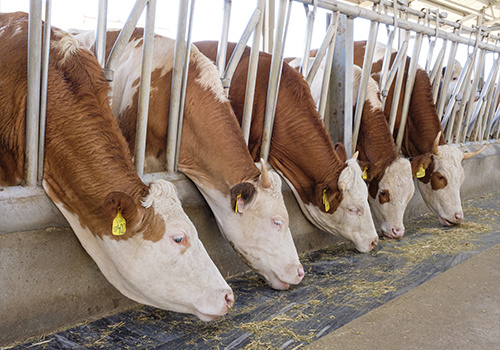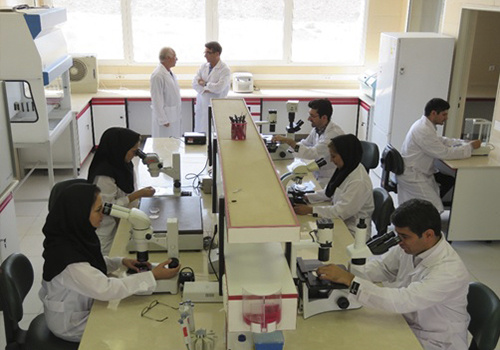Farm Animals Breeding
1- Production of the Embryo from the Superior Cow Breeds
Executive Summary
After about 10 years of activity in the field of reproductive biotechnology in farm animals, Avicenna Research Institute of ACECR has targeted to replicate the best and rare breeds of cows in recent years, focusing on the functionalization of technical knowledge of “in vitro production of embryos using the oocytes collected from live cows by ultrasonographic technique (ovum pick up: OPU)”. The significant features of this technology has led to economic growth and has been as a turning point in the livestock industry of the developed countries in the world through accelerating the genetic improvement and reducing 20% -30% of production costs through:
1. Propagation of superior cows of the selected breeds (ability to produce annually more than 40 embryos from each cow)
2. Proliferation of the particular and rare breeds of cows (dairy and beef cattle)
3. Encouraging targeted pregnancy (producing the embryo with desired gender)
Some of the Most Important Techniques Used in This Technology Include:
1. Localization of ultrasound-guided oocyte aspiration (ovum pick up)
2. Localization of in vitro embryo production (in vitro production: IVP)
3. Stabilization of embryo cryopreservation in direct embryo transfer method (direct transfer)
4. Establishment of embryo bank with the desired sex from pure and superior cows of valuable breeds.
The main goals of the Projects:
1. Helping to increase food security
2. Reducing meat imports by creation of pure herds of superior beef cattle breeds for the first time in Iran
3. eduction of production costs by 20-30% through proliferating of premium herd animals
4. Utilization of targeted pregnancy technology
5. Replacing herd animals with more favorable performance indicators such as: disease resistance, functional longevity, better fertility, higher milk and meat production, resistance to environmental stress, and so on.
2- Producing High Genetic Ability Livestock With Using Somatic Cell Nuclear Transfer Techniques
Goat and sheep Breeding
Saanen goat
The Saanen is widely recognized as the world’s best-developed and highest milk producing breed. The Saanen goats are often called Holstein Friesian and compared among goat breeds to the Holstein Friesian dairy cattle breed, because of their high level of daily milk yield and relatively low level of milk fat content. The Saanen goats derived their name from the Saanen valley of central Switzerland, where they originated. The breed has completely white, short hair with occasional black spots on the udder, ears, and nose. They have been bred for polledness, but horned goats are also used, because of less problems with infertility. The ears are erect and of medium length and they point forward. The face is straight. Horns are saber shaped and point backward. Wattles, two little unique external appendices of no known function, are common, as are beards. The average expected body weight of adult males is 90 kg and that of females 65 kg. The average height at withers is 90 cm for adult males and 80 cm for females. The Saanen breed has been most widely exported around the world and has become established as French Saanen, Weisse Deutsche Edelziege (German Improved White), British Saanen, Dutch White Goat, Polish Improved White, Bulgarian White, Banat White, Improved North Russian White, and so on. Annual milk production ranges from 300 to 2000 kg in 150–300 days of lactation, depending on the country, averaging 1285 kg with 3.5% fat and 3.4% protein in 301 days in France for dams in the year 2000 and above 975 kg in other leading countries.
Alpine goat
The Alpine is a medium to large sized breed of domestic goat known for its very good milking ability. The breed originated in the French Alps. Mature does weigh around 61 kg (135 lbs), and are about 76 cm (30 in) tall at the shoulder. Alpine goats can range from white or gray to brown and black. Alpine goats are heavy milkers. The milk can be made into butter, cheese, soap, ice cream or any other dairy product normally made from cow's milk. They are often used for commercial dairy production, as well as homestead milk goats. Their hair is short to medium in length, and they come in all colours and combinations of colours. They have erect ears and a straight profile, and are described as being "alertly graceful" with the ability to adapt to any climate thanks to their hardy nature. They are the only breed with erect ears that comes in all colours and combinations of colours. Known for its milk, the Alpine goat is famous for its rich dairy production. Alpine goats are extremely popular in the dairy industry for their docile temperament, high quality milk output and long lactation. Alpine milk has relatively low fat content, with an average fat percent of 3.4%. It is higher in sugars than cows' milk but balances itself in terms of the amount of protein. Alpine goats' milk has 2.3 g of protein per 250 ml while cow’s milk has 3.4. A higher protein count is not always good, since it packs more calories with an increased fat content. Compared to Saanen goat milk, it is higher in all nutritional aspects, except the fat content, making it a much healthier choice.
Murciano-Granadina goat
The Murciano-Granadina is a Spanish breed of dairy goat. It was created in 1975 when two existing breeds, the mahogany-coloured Murciana of Murcia and the black Granadina of Granada, began to be hybridised as a result of the official recognition of a single herdbook including both breeds. It is the most important dairy goat breed of Spain, with more than 500,000 milking females. It originated in the semi-arid areas in south eastern Spain, including parts of Murcia, Almería, Granada and Alicante. They were bred for two main traits, milk production and its ability to continue this production in dry and nutrient poor regions. They have been introduced into several areas in Latin America as well as northern Africa. These goats are medium size for goats, around 30 to 50 kg for females and 50–60 kg for males. They are solid colored, usually black or mahogany colored. The breed association, ACRIMUR (Asociación Española de Criadores de la Cabra Murciano-Granadina, or Spanish Association of Breeders of the Murcia-Granada Goat) states that they refuse to accept any goat that had white hair even in the smallest amount as M-G. The goats have erect ears and tails, with a short, coarse coat, though it is longer in males than in females. Genotyping of various goat breeds from southern Spain revealed that the Murciano-Granadina breed is significantly closer to the Murciana breed than any other, including the Granadina. These goats are very good milk producers, with a lactation period of around 210 days, often producing 500 liters of milk annually, with some individuals producing as much as twice that. Their milk has 5.6% fat, and 3.6% protein, which is better than most other goat breeds in Mediterranean Europe. In Spain this milk is primarily used for cheese pro














